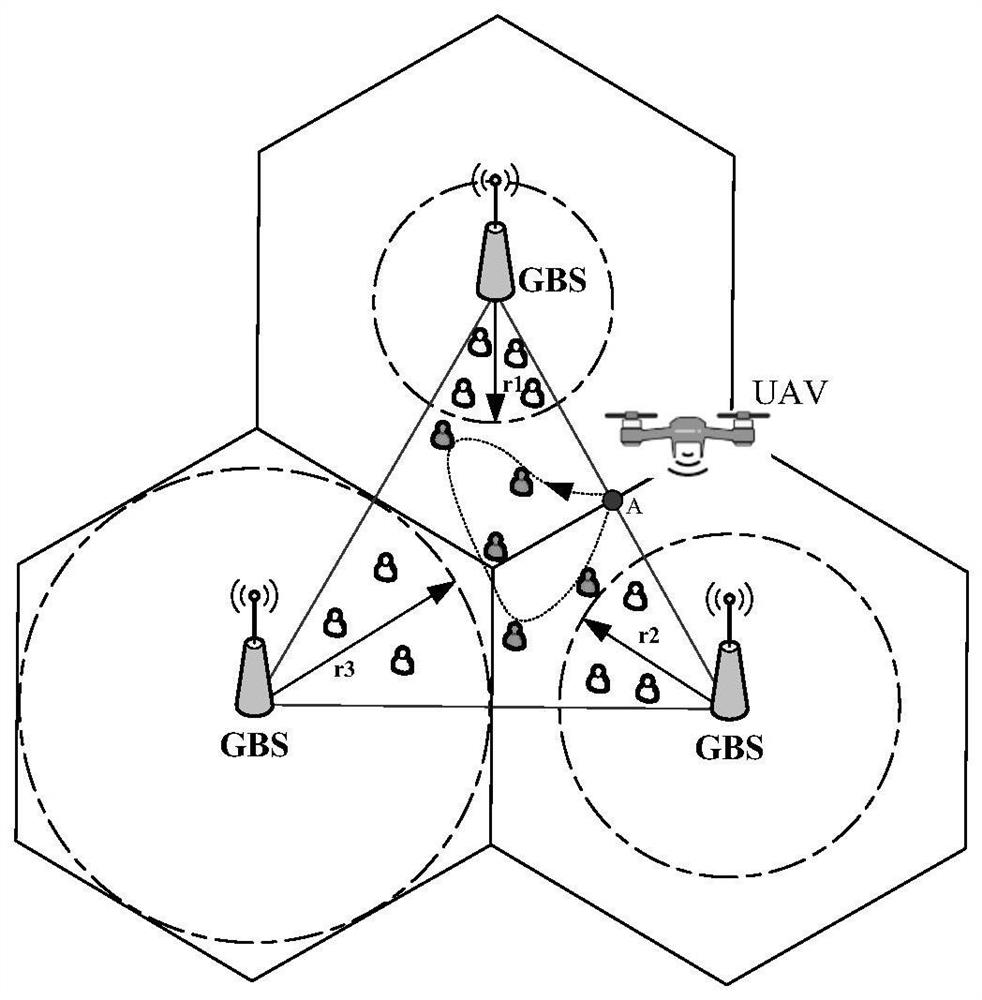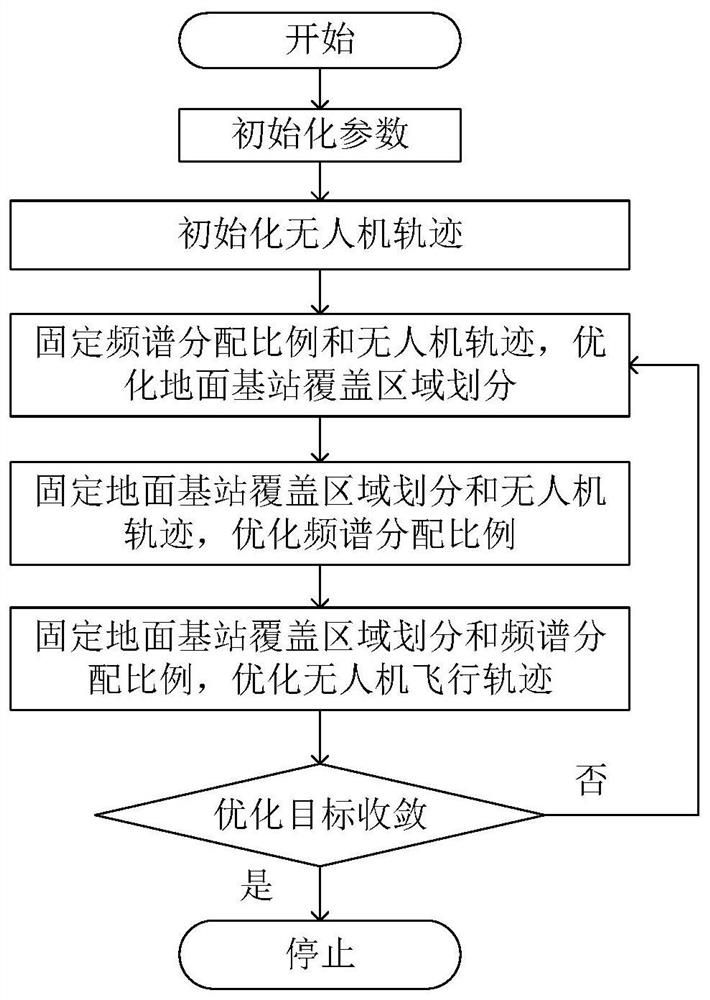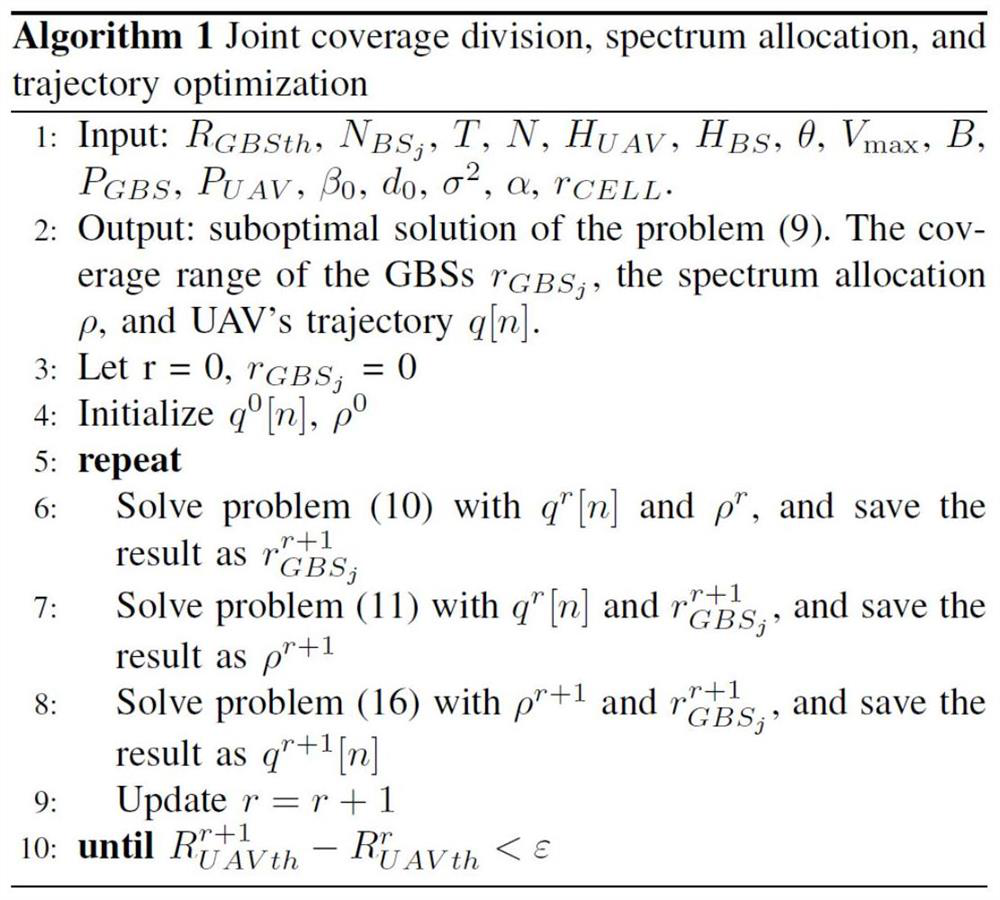Unmanned aerial vehicle cooperation and trajectory optimization method for throughput improvement
A drone and throughput technology, applied in radio transmission systems, electrical components, transmission systems, etc., can solve problems such as unbalanced distribution of users, difficulty in balancing each cell, poor channel link status, etc., and achieve spectrum resources Allocate, improve resource utilization efficiency, and improve the effect of spectrum resource allocation
- Summary
- Abstract
- Description
- Claims
- Application Information
AI Technical Summary
Problems solved by technology
Method used
Image
Examples
Embodiment Construction
[0034] The present invention will be further described in detail with reference to the accompanying drawings and embodiments.
[0035] The UAV cooperation and trajectory optimization method for throughput improvement provided by the present invention jointly considers the multi-cell base station and the UAV air base station cooperation, designs a method for optimizing coverage area division and bandwidth resource allocation, and optimizes the UAV in the air. Flight trajectories at the edge of multiple cells to improve the quality of service in densely populated cells and improve resource utilization efficiency.
[0036] In the UAV-assisted cellular network scenario, GBSs and UAVs of multiple cells cooperate to divide the coverage area, and the cell base stations respectively serve users within their coverage radius, while users in the edge area are served by UAVs. In order to avoid interference between GBS and UAV, the present invention divides the entire frequency band range ...
PUM
 Login to View More
Login to View More Abstract
Description
Claims
Application Information
 Login to View More
Login to View More - R&D
- Intellectual Property
- Life Sciences
- Materials
- Tech Scout
- Unparalleled Data Quality
- Higher Quality Content
- 60% Fewer Hallucinations
Browse by: Latest US Patents, China's latest patents, Technical Efficacy Thesaurus, Application Domain, Technology Topic, Popular Technical Reports.
© 2025 PatSnap. All rights reserved.Legal|Privacy policy|Modern Slavery Act Transparency Statement|Sitemap|About US| Contact US: help@patsnap.com



